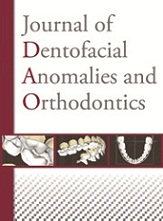Article contents
Managing temporomandibular disorders (TMD) by integrating exercise therapy into therapeutic patient educational programs: why, when, how?
Published online by Cambridge University Press: 08 November 2011
Abstract
Current evidence based data found in the scientific literature recommend that the therapeutic management of patients suffering from temporomandibular disorders (TMD) should be based initially on simple, conservative and reversible procedures including exercise therapy. The integration of this message into oral health instructions for patients makes it easy for them to keep informed about TMD and aware of the steps they can take to deal with their symptoms. The integration of exercise therapy into structured patient education programs provides patients with information about TMD and suggests methods to deal with it. This medical approach is similar to those used to treat other joints in the musculoskeletal system.
Easy to set up, this exercise therapy helps patients suffering from temporomandibular disorders to become partners in the conduct of their treatment plan of reducing pain and restoring functional comfort.
- Type
- Research Article
- Information
- Journal of Dentofacial Anomalies and Orthodontics , Volume 14 , Issue 2: T.M.D. and D.F.O. , June 2011 , 206
- Copyright
- © RODF / EDP Sciences
- 2
- Cited by


